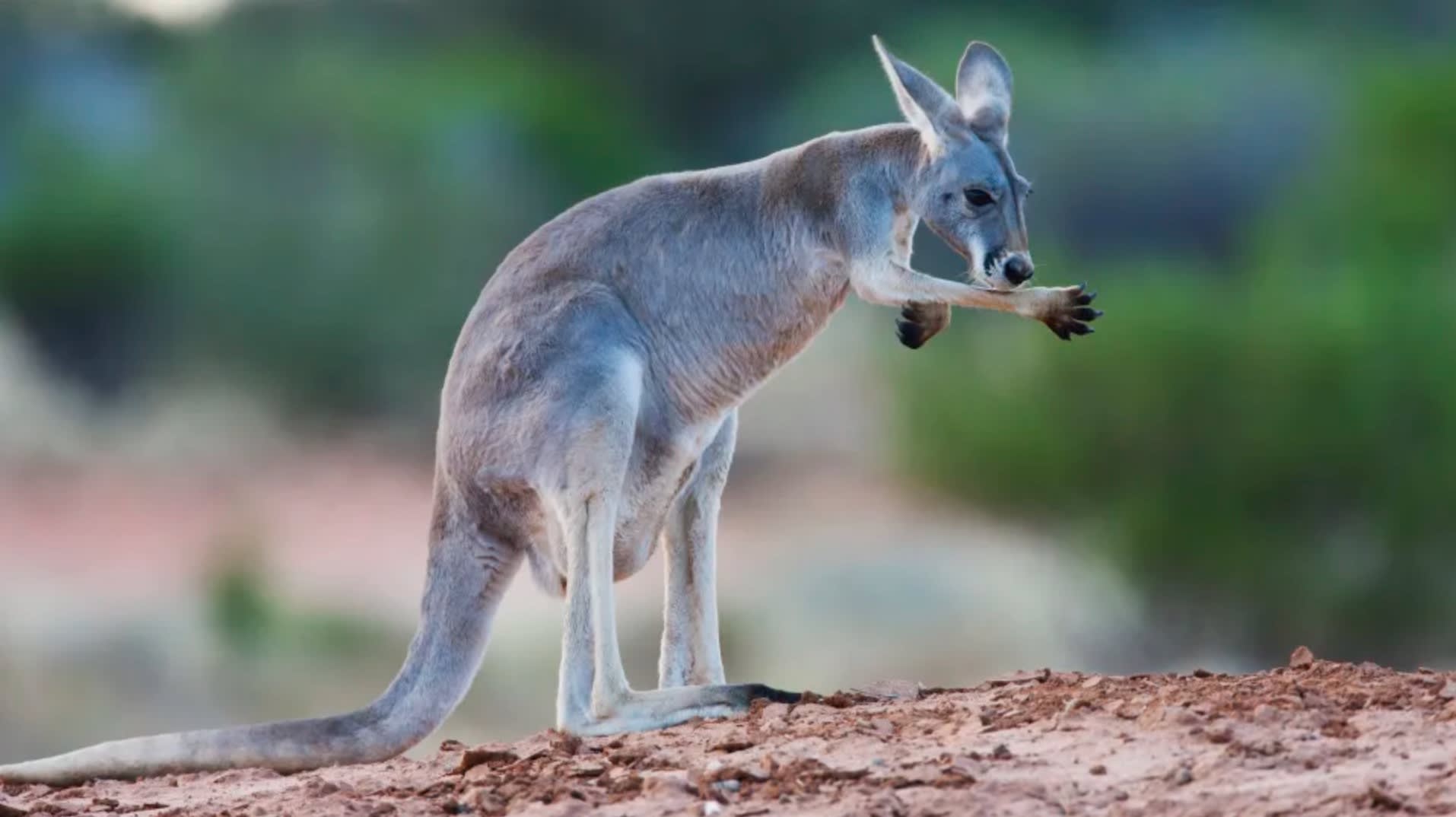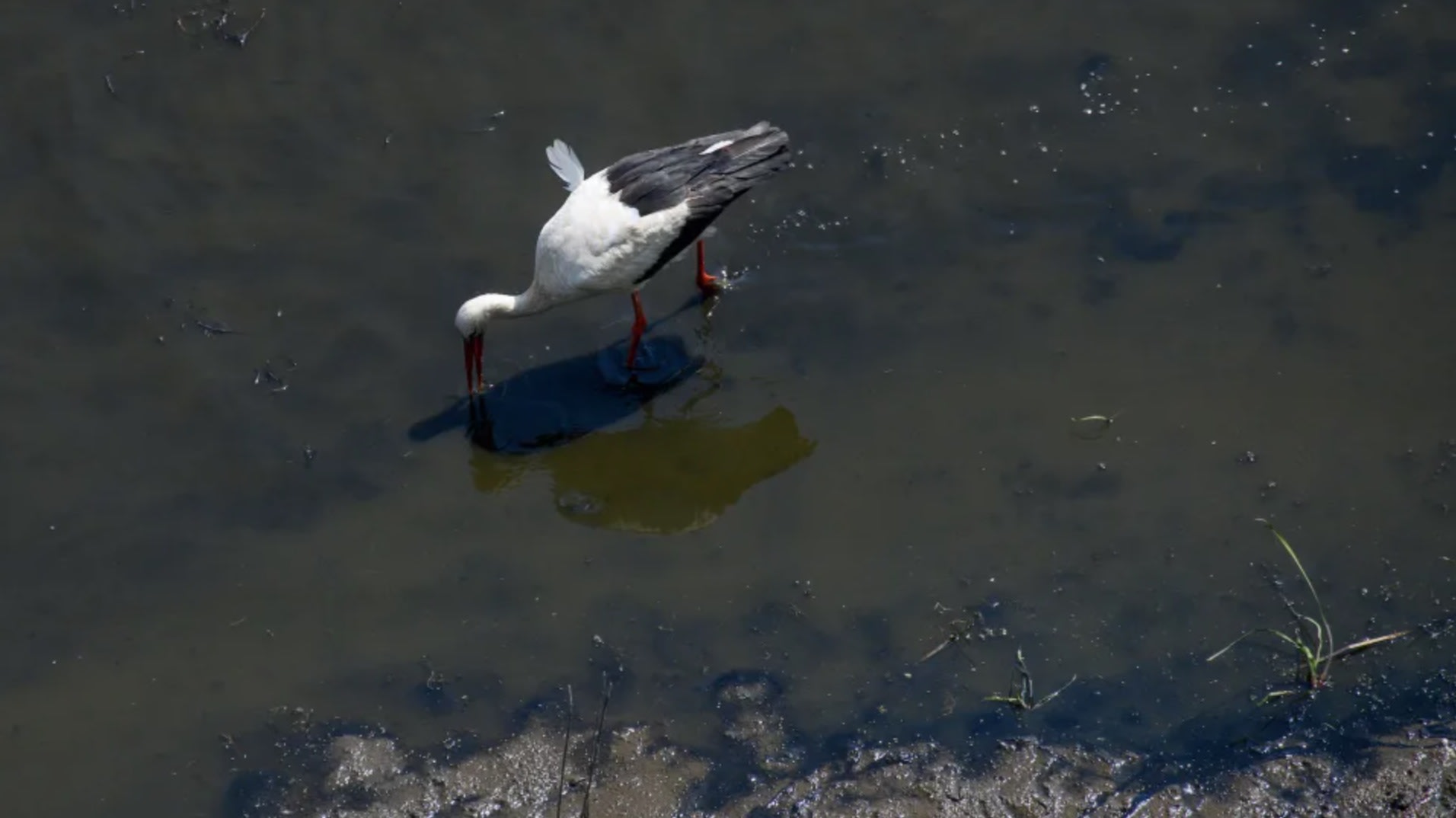دبي، الإمارات العربية المتحدة (CNN)-- اليوم الأكثر سخونة، والأسبوع الأكثر سخونة، والشهر الأكثر سخونة، وعلى الأرجح، السنة الأكثر سخونة. سجّلت سنة 2023 معدّلات غير مرغوب فيها، مع تفاقم أزمة المناخ.
وتتأثر الحيوانات، مثل البشر، بارتفاع درجات الحرارة بشكل كبير.
وتقوم بعض الأنواع بتطوير تكتيكات لمكافحة الحرارة والحفاظ على برودة أجسامها.
وفيما يلي، إليك أربع طرق تتبعها بعض الحيوانات للتغلب على الحرارة.

وضعية الاستلقاء على البطن
في شهر أغسطس/ آب، انتشرت صور سناجب نائمة على بطونها في مدينة نيويورك، ما أدهش الناس عبر الإنترنت.
لكن العلماء قدّموا تفسيرًا منطقيًا لذلك.
وقالت عالمة الأحياء، شارلوت ديفيتز، لـCNN: "يحرص السنجاب على اتصال جسمه بسطح أكثر برودة، وغالبًا ما تكون قطعة خرسانة أو رصيف موجود في الظل".
وأوضحت أن هذه طريقة شائعة لتنظيم حرارة الجسم بالنسبة للسناجب، خصوصًا بين الأنواع الكبيرة.
وتابعت: "مع تغيّر المناخ، ترتفع درجات الحرارة الإجمالية.. ونشهد المزيد من هذه الطفرات في الحرارة، والمزيد من الجفاف.. أعتقد أنه من المحتمل جدًا أن يكون هذا السلوك أكثر بروزًا وأكثر أهمية بالنسبة للسنجاب".
تغيير الشكل
توصلت دراسة علمية إلى أن بعض الحيوانات ذات الدم الحار تُطوّر أشكالًا مختلفة من أعضاء الجسم للتكيّف مع المناخ الحار.
وأشار تقرير صدر عام 2021، إلى أن بعض الحيوانات تُطوّر مناقير وأرجل وأذنين أكبر لتنظيم درجة حرارة أجسامها بشكل أفضل.
وأظهر أحد أنواع الببغاوات الأسترالية زيادة بحجم منقاره بنسبة تصل إلى 10٪ منذ عام 1871، وهو أكبر تحول شوهد في المراجعة، مع زيادات أصغر مُسجّلة في ذيول الزبابة وأجنحة الخفافيش.
وقالت سارة رايدينغ، الباحثة في جامعة "ديكين" بأستراليا وإحدى مؤلفي المراجعة، لـCNN: "هذا يعني أن الحيوانات تتطوّر، لكن ليس بالضرورة أنّها تتأقلم مع تغيّر المناخ".

البصق ونفخ فقاعات مخاطية
يستخدم حيوانان أستراليان سوائلهما الجسدية للتغلب على درجات الحرارة الحارقة في المناطق النائية.
ويقوم الكنغر الأحمر، وهو أكبر أنواع الجرابيات، بلعق ساعديه، حيث يغطي شبكة من الأوعية والشعيرات الدموية باللعاب.
ومع تبخر طبقة اللعاب، تتخفض درجة حرارة الجسم.
وفي هذه الأثناء، تقوم ثدييات الإيكيدنا، وهي تُعرف أيضًا باسم آكلات النمل الشوكية، بنفخ فقاعات مخاطية للمساعدة في مكافحة ارتفاع درجة الحرارة، وفقًا لدراسة أُجريت في عام 2023.

التبريد بالفضلات
تعتبر طيور اللقلق بين الطيور المعروفة بإفراز فضلاتها السائلة على أرجلها عندما ترتفع درجة حرارة أجسامها.
وفي النهاية، يتبخر السائل الذي يحتوي على كل من البراز والبول، ما يُخفّض درجة حرارة الجسم، في عملية تشبه التعرق عند البشر.
وتعرف هذه الطريقة باسم "التبريد بالفضلات"، وهي أكثر شيوعًا بين الطيور ذات الأرجل الطويلة، مثل اللقلق والكندور والمغدادين. وتتطلب هذه الطريقة الوصول المنتظم إلى مياه الشرب، وفقًا لتقرير عام 2021.
وأشار التقرير إلى أن فهم كيفية تنظيم الحيوانات لحرارة أجسامها يمكن أن يساعدنا في "تحسين قدرتنا على إجراء تنبؤات دقيقة لتأثير تغير المناخ على التنوع البيولوجي"، وتحديد مدى تعرض بعض الأنواع للإجهاد الحراري.

